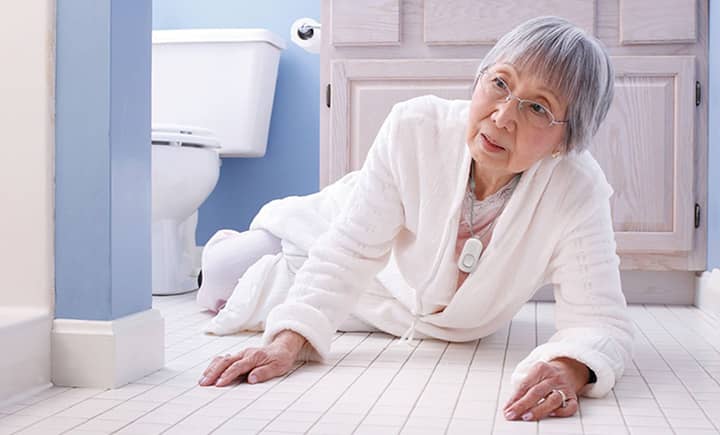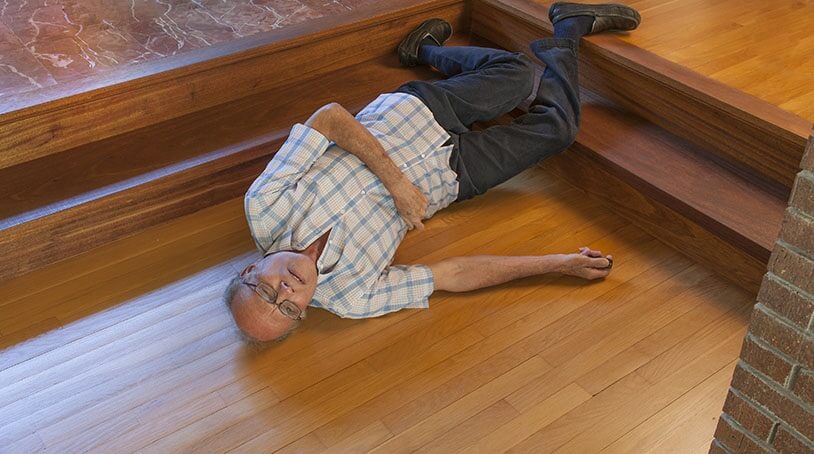As we age, the risk of falls and strokes increases significantly. For family caregivers, understanding the importance of fall detection and stroke recovery is crucial. These two health concerns are interconnected, as falls can lead to strokes and vice versa. Having a solid grasp of these concepts can greatly enhance the quality of care provided to loved ones.
The combination of fall detection and stroke recovery is essential for family caregivers. By equipping themselves with knowledge and resources, caregivers can ensure the safety and well-being of their loved ones. Let’s delve into the world of fall detection and stroke recovery, exploring their significance and how they can be effectively managed.

Understanding Fall Detection
What is Fall Detection?
Fall detection refers to the technology and methods used to identify when a person has fallen. This can involve wearable devices, sensors, and systems that automatically alert caregivers or emergency services when a fall occurs. Early detection is vital to prevent further injury and ensure prompt medical attention.
The Importance of Fall Detection
Falls are a leading cause of injury among the elderly. Early fall detection can significantly reduce the severity of injuries and improve recovery outcomes. For family caregivers, having a reliable fall detection system in place provides peace of mind and ensures that immediate assistance can be provided when needed.
Fall Detection Technologies
There are various technologies available for fall detection, including wearable devices like smartwatches and pendants, as well as home systems with motion sensors. Choosing the right technology depends on the individual’s needs and lifestyle. For more insights, visit diet and fall prevention resources.
Stroke Recovery: A Comprehensive Approach
What is Stroke Recovery?
Stroke recovery involves the process of regaining skills and abilities lost due to a stroke. This can include physical therapy, speech therapy, and occupational therapy. The goal is to help individuals regain independence and improve their quality of life.
The Role of Family Caregivers in Stroke Recovery
Family caregivers play a vital role in stroke recovery. They provide physical and emotional support, assist with daily activities, and ensure adherence to rehabilitation plans. Understanding the recovery process and being actively involved can greatly enhance the effectiveness of stroke rehabilitation.
Physical Therapy and Stroke Recovery
Physical therapy is a cornerstone of stroke recovery. It helps individuals regain strength, balance, and coordination. Caregivers can support therapy sessions and encourage practice at home. For more information, explore physical therapy insights.
Speech and Occupational Therapy
Speech therapy helps individuals improve communication skills, while occupational therapy focuses on regaining the ability to perform daily tasks. Both are essential components of stroke recovery and require active participation from caregivers and patients alike.
Connecting Fall Detection and Stroke Recovery
How Falls and Strokes are Interconnected
Falls can lead to strokes due to head injuries or increased stress on the body. Conversely, strokes can increase the risk of falls due to impaired balance and coordination. Understanding this connection is crucial for effective prevention and management.
Preventing Falls to Aid Stroke Recovery
Preventing falls is an integral part of stroke recovery. Caregivers can implement safety measures at home, such as removing tripping hazards and installing grab bars. For more tips, visit this guide on fall prevention.
Monitoring and Assistance
Using fall detection technology in conjunction with stroke recovery plans ensures that any incidents are promptly addressed. This combination enhances overall safety and supports the rehabilitation process.
The Role of Technology in Fall Detection and Stroke Recovery
Innovative Solutions for Caregivers
Technological advancements have revolutionized fall detection and stroke recovery. From wearable devices to smart home systems, caregivers have access to tools that enhance safety and support rehabilitation efforts.
Choosing the Right Technology
When selecting technology for fall detection and stroke recovery, consider factors like ease of use, reliability, and compatibility with existing systems. Consulting with healthcare professionals can provide valuable insights.
The Future of Elderly Care
The integration of technology in elderly care continues to evolve. As new solutions emerge, family caregivers can expect improved safety and enhanced recovery outcomes for their loved ones.

FAQs
What is the best fall detection device for seniors?
The best device depends on individual needs and preferences. Key features to consider include automatic fall detection, ease of use, and reliable alert systems.
How can family caregivers support stroke recovery?
Caregivers can support recovery by assisting with therapy exercises, providing emotional encouragement, and ensuring adherence to medical and rehabilitation plans.
Are there any lifestyle changes that can prevent falls?
Yes, lifestyle changes such as regular exercise, a balanced diet, and maintaining a safe home environment can significantly reduce the risk of falls. For more tips, explore vision and fall prevention.
This article contains affiliate links. We may earn a commission at no extra cost to you.






